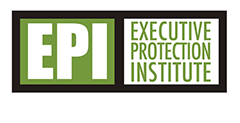Defining and preparing a corporate travel risk management program can make all the difference during business travel. Knowing how to protect your principals and from what will allow you to provide more effective close protection services and always be on top of your assignment. Here’s everything to know about creating a corporate travel risk management program, what it entails, and how to build a successful program and procedure.
What Is Corporate Travel Risk Management?
Travel risk management (TRM) is a proactive approach to protecting principals while they’re traveling or on the move. A robust TRM strategy includes proactive risk identification, risk assessment, and mitigation.
The threats and risks you’re protecting your principals from will vary and can change depending on destination, time of year, and the principal. Therefore, every strategy and approach will be slightly different and no two assignments are ever the same.
The Importance of a Corporate Travel Risk Management Program
A Corporate Travel Risk Management program (TRM) plays a critical role in safeguarding both the company and its employees. Here are just a few reasons why it’s so important:
- Safety – The safety and well-being of travelers is the top priority. Proper TRM programs ensure that you can adequately protect and prepare employees for potential risks, whether health-related, environmental, or political, reducing the chance of harm.
- Compliance – Companies have a duty of care to their employees. Implementing effective TRM practices helps meet legal requirements, minimizing the risk of liability due to negligence.
- Business Continuity – Travel disruptions, such as natural disasters or civil unrest, can halt operations. A solid TRM strategy allows companies to respond swiftly, ensuring minimal disruption and protecting revenue.
- Reputation – A company that consistently prioritizes the safety of its employees fosters trust, not only internally but also with clients and stakeholders. Failing to do so can damage credibility and a brand’s image.
The Evolving Landscape of Travel Risks
As global landscapes become more interconnected, business travelers must navigate an increasingly complex array of potential challenges. The dynamic nature of international travel exposes them to a range of risks, from health issues and natural disasters to political instability and security threats. A Corporate Travel Risk Management program is essential in addressing these challenges and ensuring the safety and preparedness of business travelers.
Health Concerns
Unforeseen illnesses, ranging from foodborne diseases to viral outbreaks, can severely disrupt travel plans. The COVID-19 pandemic highlighted the vulnerability of travelers to infectious diseases and the importance of proactive health measures.
TRM includes pre-travel health screenings, vaccination requirements, and contingency plans for medical emergencies. In countries where language barriers exist, accessing proper healthcare can be challenging, making it crucial to have a support system that can navigate foreign medical environments.
Natural Disasters
Natural disasters such as earthquakes, hurricanes, and wildfires are unpredictable and can happen anywhere. For instance, earthquakes in Turkey or wildfires in California pose significant risks to travelers who may find themselves in the wrong place at the wrong time.
TRM ensures that you are equipped with real-time information, evacuation plans, and access to resources in case of emergency. Proactive monitoring of global conditions can help avoid high-risk areas altogether.
Geopolitical Instability
Political unrest and sudden geopolitical shifts can make traveling through certain regions highly dangerous. Countries experiencing political instability may have violent protests, military coups, or other disturbances that pose a threat to travelers.
Effective TRM provides you with the latest intelligence on geopolitical developments, allowing the traveler to modify or cancel trips as needed. This strategic planning can prevent exposure to dangerous situations and offer rapid support for evacuation if necessary.
Security Issues
The risk of theft, terrorism, and security breaches can arise in any location, from major cities like Paris and London to popular tourist spots like Las Vegas. Even seemingly safe destinations may expose travelers to criminal activity or terrorism. Comprehensive security protocols, from the use of secure transportation to avoiding high-risk areas, are part of TRM.
How to Build a Corporate Travel Risk Management Program
Careful planning and research are the cornerstones of an effective corporate travel risk management program.
Defining Procedures
Employers are the ones who have the duty of care obligations to their employees and ensure they can safely conduct their business trips. However, to ensure the success of the program, they depend on close protection operatives and providers to facilitate that service.
While doing corporate travel risk management for a client, you will have to look into all the details that could affect their trips. From regional restrictions to procedures in case of emergency, everything has to be laid out clearly and there is no room for misunderstandings.
Accessing Real-Time Data
Traveler safety and well-being are too critical to leave to chance. Relying on guesswork when making decisions can lead to unnecessary exposure to risk. Building a robust corporate travel management program requires access to real-time information that empowers informed decisions.
Enforcing Pre-travel Training
Pre-trip training for traveling employees is a crucial component of any effective Travel Risk Management program. While travel managers play a key role in overseeing safety protocols, you have to adequately prepare your principals to navigate risks they may encounter on the ground.
For high-risk destinations, both you and your principals must be thoroughly briefed on the specific political, cultural, and environmental risks of the country or region you are visiting. This includes understanding local customs, any ongoing geopolitical instability, and the proper protocols for staying safe in such areas.
Developing a Corporate Travel Risk Management Framework for High-Risk Regions
For higher-risk regions, implementing a robust assessment framework for evaluating traveler safety is essential. This framework must take into account both general security concerns and region-specific risks to ensure comprehensive protection.
Key components of this assessment framework should include:
- Political instabilities – Assess the political climate of the destination. Are there protests, governmental unrest, or military actions that could escalate while the employee is traveling? Political instability can create unpredictable situations that pose serious risks.
- Potential for natural disasters – Certain regions are more susceptible to natural disasters like earthquakes, floods, or hurricanes. Ensure that your assessment includes real-time monitoring of these risks and contingency plans in the event of a disaster.
- Regional endemic disease – Health risks, such as regional endemic diseases, must be factored in. This includes diseases like malaria, dengue fever, or other infectious outbreaks that might require vaccinations or preventive measures.
- Crime rates in the region – High crime rates, particularly violent crime or organized crime activity, can pose serious risks for travelers. Research local crime trends and identify whether specific areas within the region are particularly unsafe for foreigners.
- Entry requirements – Each country may have unique entry requirements, including visas, health certifications, and security checks. Failure to comply with these regulations can result in denied entry or deportation, so it’s essential to stay up to date with these requirements.


